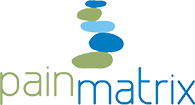Article by Mandy Squires (Geelong Advertiser)
Featuring Dr Michael Vagg
As a Deakin University researcher, Dr Mel Thomson is well placed to sort science from snake oil.
Twenty years of academia has given the mum of two the ability to find, read and understand complex scientific papers and quickly assess the legitimacy of therapies, pills and potions spruiked on the internet or displayed on pharmacy shelves.
Recently diagnosed with tumefactive multiple sclerosis, the 40-year-old has put her faith firmly in science and conventional medicine to treat her illness.
But Dr Thomson understands how others in her position — when presented with a potential cure for an incurable disease — are seduced by the hope for sale in a homeopath’s bottle or the promise of remission through the consumption of copious amounts of multivitamins.
Walk through most chemists and you’ll find whole walls of alternative treatments unsupported by science to empty your pockets and leave your condition unchanged, she said.
“You shouldn’t need a PhD in medical research to be able to sort through it all but sadly I think you actually do,” Dr Thomson said.
As the mother of a seven-year-old with high-functioning autism, Dr Thomson said she was also regularly forced to bat away theories and well-intentioned advice relating to her son’s condition.
Geelong pain management specialist and Deakin School of Medicine senior lecturer, Dr Mick Vagg, sees many patients without Dr Thomson’s level of education, who — in desperate efforts to relieve chronic pain — fall prey to “dodgy” treatments and health advice.
“So much of this stuff actually has no plausible benefit at all and some of it is stuff that is entirely speculative in nature. Other stuff, like homoeopathy, has been comprehensively debunked,” Dr Vagg said.
“When marketing trumps evidence then people get hurt financially as well as emotionally and sometimes even their health gets harmed.”
The National Health and Medical Research Council this year released a statement saying there was no reliable evidence homoeopathy was effective for any health condition.
“People who choose homoeopathy may put their health at risk if they reject or delay treatments for which there is good evidence for safety and effectiveness,” the NHMRC said.
Dr Vagg said pharmacies risked eroding the public’s trust by promoting therapies that had not been put through scientific testing and clinical trials to prove they work.
But Community Care Chemist chief executive officer, Julie Ryan, told the Geelong Advertiser the chain offered “integrative medicine and healthcare”, and employed naturopaths as well as pharmacists, because of public demand.
“Complementary and natural medicine use is on the increase, and taken by many of our customers,” Ms Ryan said. “There will always be people who will choose complementary medicines, in preference to, or in combination with, prescription medication. We respect that our customers have a choice and acknowledge that they are seeking information.
“Pharmacies are ideally placed to provide a regulated environment which encourages our customers to disclose all medication choices. Pharmacists are trained to ensure the combination of complementary and prescription medications taken are safe and effective.”
Chair of medicine at Deakin University and Barwon Health, Professor David Ashley, said not only was there little scientific evidence to support the use of multivitamins to improve health, there was growing evidence their use could actually shorten life in some people.
The director of Geelong Hospital’s Andrew Love Cancer Centre and executive director of the Western Alliance Academic Health Science Centre, Prof Ashley is also a former director of children’s cancer services at the Royal Children’s Hospital.
He said many of his patients took multivitamins and sought alternative therapies in a bid to improve their cancer prognosis.
“Does it improve their cancer outcome? Absolutely not,” he said.
“What it does do is drain their pockets and it puts money in the pockets of people who are really manipulating the whole community with this stuff. There are players charging a lot of money for alternative cancer therapies that are not doing anything. These people are really con artists.”
Dr Thomson said after posting on social media about her illness recently, a sponsored advertisement for an experimental stem cell treatment popped up on her Facebook page.
A lay person would find it hard to discriminate between a controversial stem cell treatment – advertised on the internet and across social media – and the legitimate Stem Cells Australia, which was administered by the University of Melbourne and included scientists from Monash University, the CSIRO, the Walter and Eliza Hall Institute for Medical Research and the Florey Institute, Dr Thomson said.
Most people would not even suspect stem cell therapy was part of an unregulated industry now under review by the Therapeutic Goods Administration, she said.
Dr Vagg said a stem cell treatment may present as highly scientific and appear to offer genuine hope to people with serious illness.
“But doctors involved may not have done serious research work or published papers and been part of research programs at universities or even university hospitals. They may also rely on testimonials which is specifically prohibited,” he said.
“So my suggestion is that anyone who is contemplating stem cell treatment outside of a university hospital or outside a proper clinical trial should really avoid it because there is no guarantee that they are getting what they think they’re getting,” Dr Vagg said.
“And that’s the problem with most of this stuff. There’s just no evidence.”
